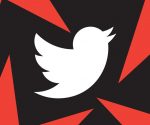James Webb Space Telescope: what to expect from the NASA mission
[ad_1]
On Christmas Day, NASA is gifting astronomers one of the greatest presents it can give by launching the most powerful space telescope ever created. Called the James Webb Space Telescope, or JWST, the space observatory is meant to be the successor to NASA’s Hubble Space Telescope already in orbit around Earth. And it promises to completely transform the way we study the cosmos.
Sporting the biggest mirror of any space-bound telescope ever launched, JWST is tasked with collecting infrared light from some of the most distant stars and galaxies in the Universe. With this capability, the telescope will be able to peer far back in time, imaging some of the earliest objects to have formed just after the Big Bang. On top of that, it will unravel the mysteries of supermassive black holes, distant alien worlds, stellar explosions, dark matter, and more.
NASA has worked for nearly three decades to craft this telescope and get it to the launchpad. Now, the telescope is finally set to launch on top of a European Ariane 5 rocket out of Europe’s primary launch site in Kourou, French Guiana in South America, on Saturday, December 25th. But once the telescope is in space, there’s still a long way to go. Because JWST is so massive, it must fly to space folded up. Once in space, it will undergo a complex unfurling process that will take up to two weeks to complete. And this reverse origami must go exactly right for the telescope to function properly.
All the while, JWST will be traveling to an extra cold spot located 1 million miles from Earth, where the spacecraft will live out its life, collecting as much infrared light as it can. It’s an extremely complicated launch and mission, with many opportunities for things to go wrong along the way. But if everything goes right, the world’s astronomers will have an unbelievably powerful tool at their disposal for the next five to 10 years.
Read on to learn more about one of NASA’s most important launches of the decade.
The Impressive Specs
The first thing to know about JWST is it’s massive. The telescope sports a light-collecting mirror that’s more than 21 feet, or 6.5 meters, wide. For comparison, Hubble’s mirror is just under 8 feet, or 2.4 meters, across, and it’s been responsible for imaging some of the most iconic objects we’ve ever seen in the Universe. Thanks to its larger mirror, JWST will be between 10 and 100 times more sensitive than Hubble, allowing it to spot very faint objects in the sky.
“You can sort of think of a telescope mirror like a light bucket,” Amber Straughn, the deputy project scientist for JWST at NASA’s Goddard Space Flight Center, tells The Verge. “The bigger the mirror, or the bigger the bucket, the more stuff you collect. And of course, in this case, the stuff is photons light from the distant Universe.”
:no_upscale()/cdn.vox-cdn.com/uploads/chorus_asset/file/23119939/50113128506_77faa0a8f4_o.jpg)
To assemble this massive mirror, JWST’s engineers had to build it in pieces. It’s made out of 18 hexagonal segments of the lightweight element beryllium, each one roughly the size of a coffee table. Together, the segments must align almost perfectly, moving so precisely they are aligned within a fraction of a wavelength of light, which is about 1/10,000th the diameter of a human hair.
“Each mirror has to match the other mirrors to a very small tolerance so that when they are aligned, they act as though they were a single mirror,” Lee Feinberg, the optical telescope element manager for JWST at the NASA Goddard Space Flight Center, tells The Verge.
One key feature of the mirror is that it is coated in a layer of gold about 200 times thinner than the average human hair. The gold is what allows JWST to see in the infrared — a type of light that is associated with some of the most distant galaxies and stars in the cosmos. Because the Universe is expanding, the farthest objects away from Earth are speeding away much more rapidly than objects that are nearer to us. The faster they sprint away, the more their light gets stretched, shifting away from the visible part of the spectrum and toward the infrared. With its gold mirrors, JWST should be able to see the infrared light from galaxies that are up to 13.6 billion light-years away from Earth.
And that’s what makes the telescope a window into the past. Light from objects 13.6 billion light-years away will have taken that many years to reach the telescope’s mirror. Since we think the Universe is roughly 13.8 billion years old, that means these objects were around just 100 to 250 million years after the Big Bang.
However, observing in the infrared is incredibly tough. Infrared light is associated with heat, which is emitted by everything with a temperature above absolute zero. JWST can’t live in our planet’s orbit or anywhere on the ground; the heat from Earth and its atmosphere would disrupt the observations. Even the telescope itself needs to be extra cold so that it doesn’t produce too much heat and throw off its own observations. That’s why JWST is being sent to a place 1 million miles from our world, known as a Lagrange point between the Earth and the Sun, where the pull of gravity and centrifugal forces are just right for the telescope to remain in a stable orbit. At this Lagrange point, JWST will stay at more or less the same distance and position from Earth at all times.
:no_upscale()/cdn.vox-cdn.com/uploads/chorus_asset/file/23119953/STScI_01F6QXZP80QG7SNS3M7YZWDNN3.png)
Even at this faraway distance, heat from the Sun is still an issue. To stay extra cool, JWST is equipped with what is known as a sunshield. It’s made up of five ultra-thin layers of a material called Kapton, each the size of a tennis court stacked on top of each other. The outermost layer will always face the Sun and reflect most of its heat, operating at a scorching 230 degrees Fahrenheit. But each successive layer will be cooler and cooler so that JWST’s instruments stay nice and cryogenic, operating at about minus 370 degrees Fahrenheit.
A Troubled History
JWST’s journey to the launchpad has been long and bumpy. After years of discussion about what the next major space telescope after Hubble should look like, astronomers at the Space Telescope Science Institute formally recommended in 1996 that NASA build a new infrared space telescope with a mirror 4 meters wide. But NASA’s administrator at the time, Dan Goldin, decided 4 meters was not big enough and called on mission designers to increase the size to more than 8 meters.
This decision made building the spacecraft way more complex. The massive mirror meant that JWST had to launch folded up since no rocket available was big enough to house the spacecraft in its final configuration. And the truth was the technologies needed to make the telescope a reality — such as the system and mechanics needed to perfectly align those mirrors — still needed to be invented.
“The next stumble was that it’s way more expensive than we thought,” Thomas Zurbuchen, the associate administrator for the Science Mission Directorate at NASA, tells The Verge.
Initially, astronomers hoped to launch JWST sometime between 2007 and 2011, for an estimated cost of anywhere from $1 billion to $3.5 billion. But over the decades, JWST’s costs continued to grow, while its launch date was pushed back and back. Eventually, lawmakers proposed canceling the project altogether over the snowballing budget. NASA then did a complete re-plan of the mission in 2011, and Congress agreed to continue funding the project while placing a budgetary cap on the telescope’s total life of $8.8 billion. A new launch date was set for 2018.
:no_upscale()/cdn.vox-cdn.com/uploads/chorus_asset/file/23119959/50068963377_8f522e0307_o.jpg)
But costs continued to increase while development stalled. Meanwhile, as engineers began piecing the telescope together and testing it to get ready for space, there were all sorts of issues. While the telescope was at Northrop Grumman, the primary contractor for the spacecraft, screws and washers seemingly came off the vehicle at one point, engineers found tears in the sunshield, and someone applied excessive voltage during a test, to name just a few errors. Eventually, in 2018, NASA settled on a final cost for the program: a whopping $9.7 billion to cover both development and the spacecraft’s operations in space. The agency also admitted that it wouldn’t be launching that year.
New controversies arose over JWST during the telescope’s final stretch. Earlier this year, a group of astronomers raised concerns about the telescope’s namesake, James Webb, a NASA administrator during the Apollo program who oversaw the United States’ ambitious plan to put people on the Moon. In an article published in Scientific American, three astronomers called on NASA to rename the telescope, citing the fact that Webb was a high-ranking civil servant in the Truman administration during the Lavender Scare — when LGBTQ individuals were targeted and purged from the federal workforce. Ultimately, NASA decided not to rename the telescope after doing its own internal investigation and claiming it could not find evidence that Webb had been involved. However, the investigation was criticized for not going deep enough.
With its controversial name still intact, JWST was finally shipped to its launch site in French Guiana in October. On brand, its woes did not stop when it arrived in South America. The telescope’s launch was originally set for December 18th but was delayed twice due to a couple of mishaps, including a broken clamp band that sent unexpected vibrations through the telescope and an unforeseen communications issue between the rocket and its ground systems. The clamp issue was resolved, but the latter is still ongoing — though NASA claims it should not be an issue for launch.
As Zurbuchen explains, every precaution has to be taken when a problem arises, no matter how small of an issue it might seem. The spacecraft has taken so long and cost so much to build that everything has to go right. Otherwise, the risk is a $10 billion telescope that’s dead in space.
“Small mistakes… the vast majority of them have small consequences,” says Zurbuchen. “There are no mistakes that are small on Webb that have small consequences. You have to be near perfection.”
Launch Is Just The Start
As of now, JWST is set to launch on December 25th at 7:20AM ET. Its ride to space, the Ariane 5 rocket, has been Europe’s premier rocket for roughly the last two decades. In addition to being a highly capable rocket with a strong launch record, the selection of Ariane 5 also brings NASA’s European partners into what is considered a truly global mission.
The launch itself should last roughly 26 minutes before JWST separates from the Ariane 5 rocket. While rocketing to space is always risky, there’s more anxiety to come when JWST is actually free from the Ariane 5. “Launch is really only the beginning,” says Straughn.
If all goes well with JWST’s takeoff, that’s when the “29 days on the edge” — a term coined by NASA — begins. It’s an ominous phrase to describe the telescope’s complicated unfurling process. Once freed from the rocket and en route to its destination 1 million miles from Earth, the spacecraft will slowly unfurl and blossom like a mechanical flower.
The first thing JWST must do right after launch is deploy its solar panel to start gathering energy from the Sun needed to power the entire spacecraft. During its next day in space, it’ll deploy its high-gain antenna needed to communicate with Earth. After that, the really wild reverse origami begins. JWST will change its shape and start to deploy its delicate sunshield, a process that is set to last for days. If that goes well, then the telescope will fully deploy its primary mirror.
Even when the unfurling is done after about two weeks, JWST won’t be at its final destination — it’ll still have weeks to go. A little less than a month out from launch, the telescope will fire its onboard thrusters to put itself into its final position at its intended Lagrange point.
Needless to say, a lot of astronomers, engineers, and scientists won’t be getting much rest until the entire thing is over. And there are plenty of moments where one failed pulley or one sticky actuator could jeopardize the future of the entire mission.
But if everything goes right, then NASA will soon have some incredibly sharp eyes in the sky. The telescope will have to spend some time cooling down when it reaches its final orbit, and then engineers will need some months to test out all the instruments to see if they work properly. But JWST could be taking its very first breathtaking images as soon as this summer. For astronomers, the wait will be well worth it.
“I really do think that this telescope will be transformational for astrophysics,” says Straughn. “I think that we will learn things about the Universe that completely surprise us, and that’s one of the most exciting prospects about any time we put a big, bold telescope like this into space. We learn things that we never expected.”
[ad_2]
Source link










